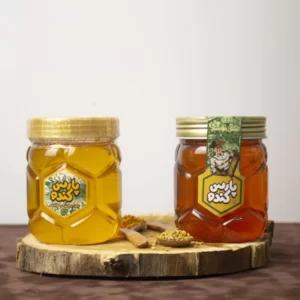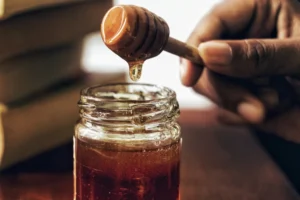Manuka Honey is honey that is produced by bees that have mostly visited flowers from the Manuka tree. This often means some people refer to it as the Manuka Honey tree.
The Manuka Tree (or bush) is a plant that is native to New Zealand.
The word Manuka is an indigenous Maori word to describe the tree Leptospermum Scoparium. It is also then used to describe the honey that is harvested from the Manuka plant.
It has been scientifically proven that the Manuka tree flower that, when visited by honey bees, produces a rare type of honey that is high is methylglyoxal. It is methylglyoxal (also shorted you MG or MGO) that gives Manuka Honey it’s unique healing properties due to the hydrogen peroxide levels.
The Manuka tree is typically found in rugged and often sparse landscapes. It has a unique ability to thrive in high mountains regions, even above snow lines.
Scientific studies in the far north of New Zealand, Especially around Cape Reigna, are ongoing to understand how the Manuka tree manages to adapt and survivor in harsh environments.
A unique element or New Zealand Manuka Honey is that it is possible to test for the markers that The indicate if a Manuka honey has been harvested by bees, predominantly from the Manuka flower.
Because Manuka trees are found, often remotely, it typically means Manuka bee hives can be placed in areas dominated by Manuka trees.
If the Manuka trees are found amongst other varieties of trees that also flower at the same time (Nov-Feb) then the levels of Manuka flower in the honey will be lower.
If they are below the required levels set by the New Zealand government and the New Zealand Ministry of Primary Industries, the then the honey is identified as a multifloral manuka honey or Manuka honey blend.
This blend or multifloral definition simply means the honey is taken from many, or a multiple of flowers.
As it is the unique properties of the Manuka flower that give New Zealand Manuka honey it’s health benefits, it is cheaper and less difficult to find multifloral Manuka honey blends.



